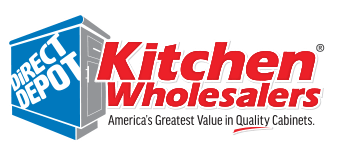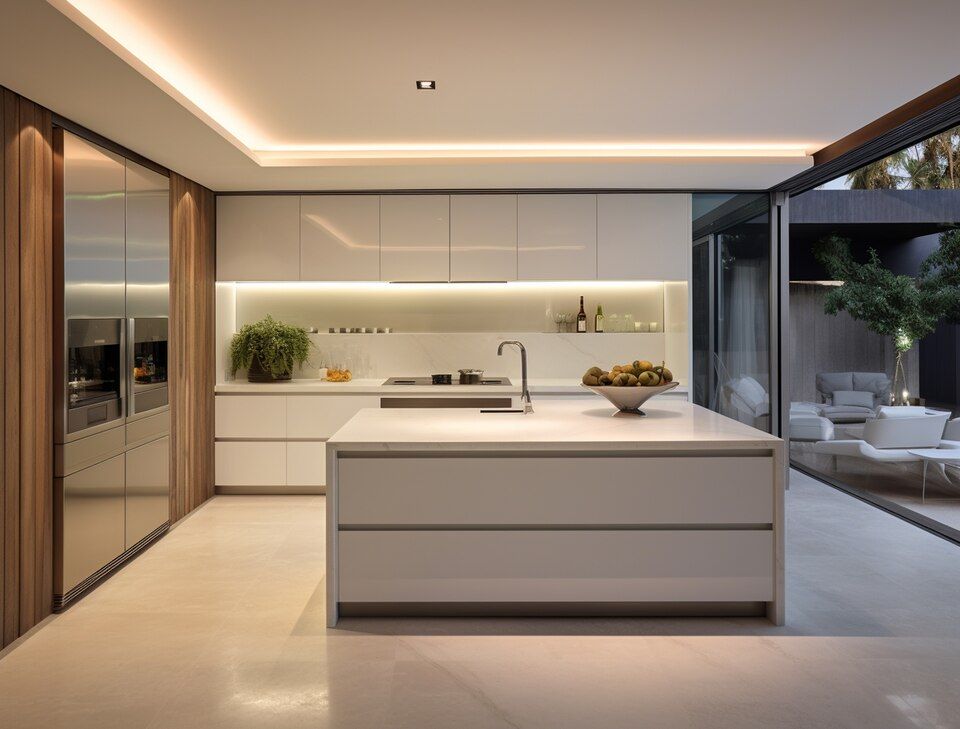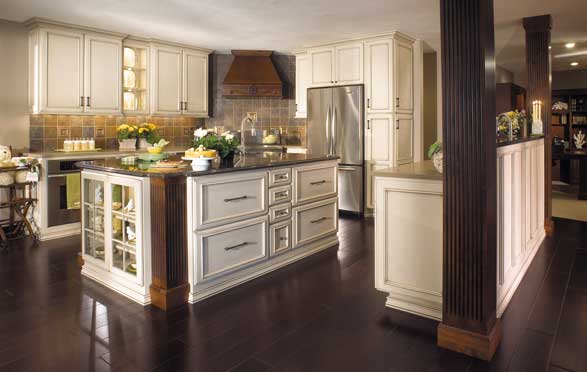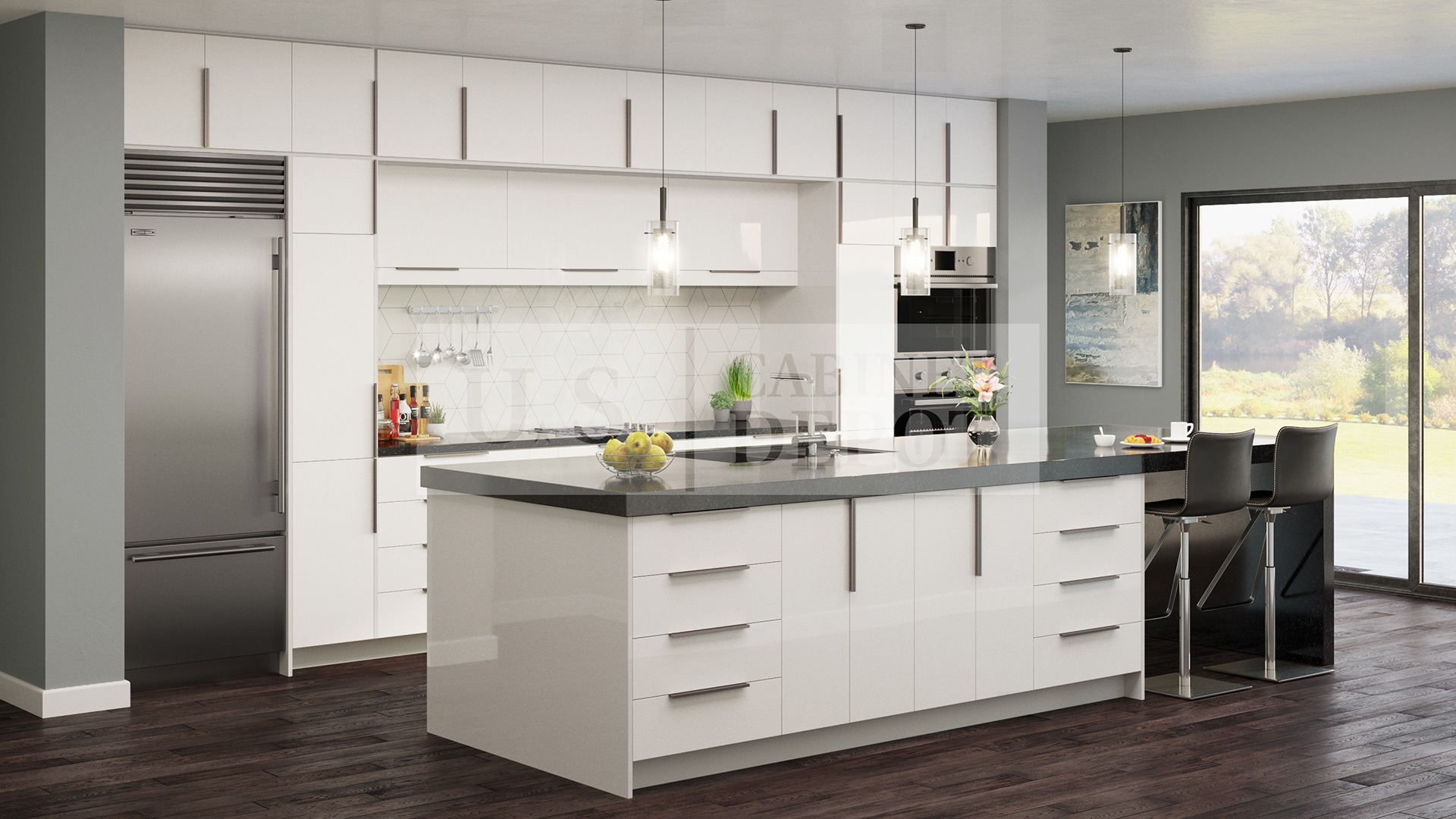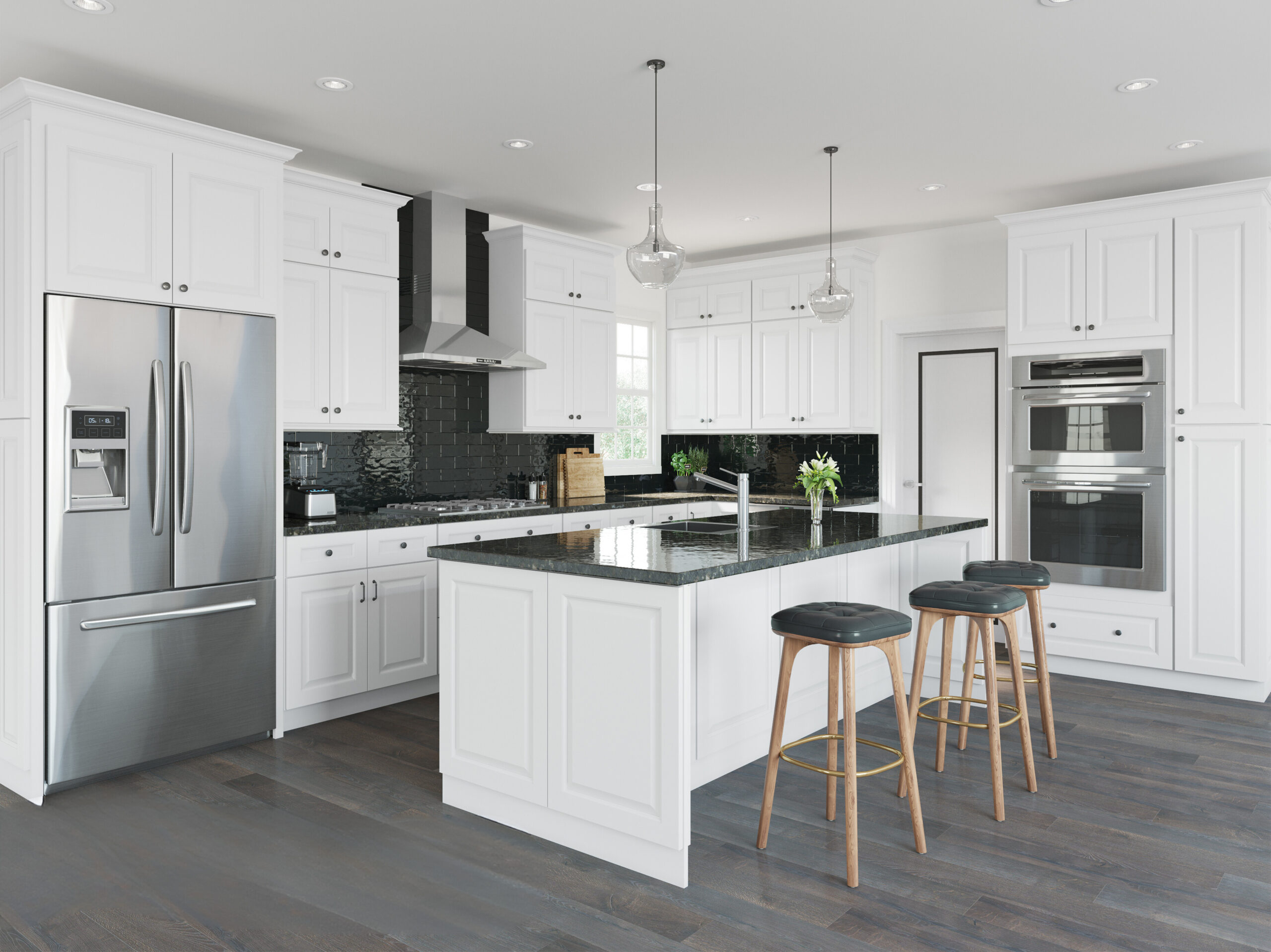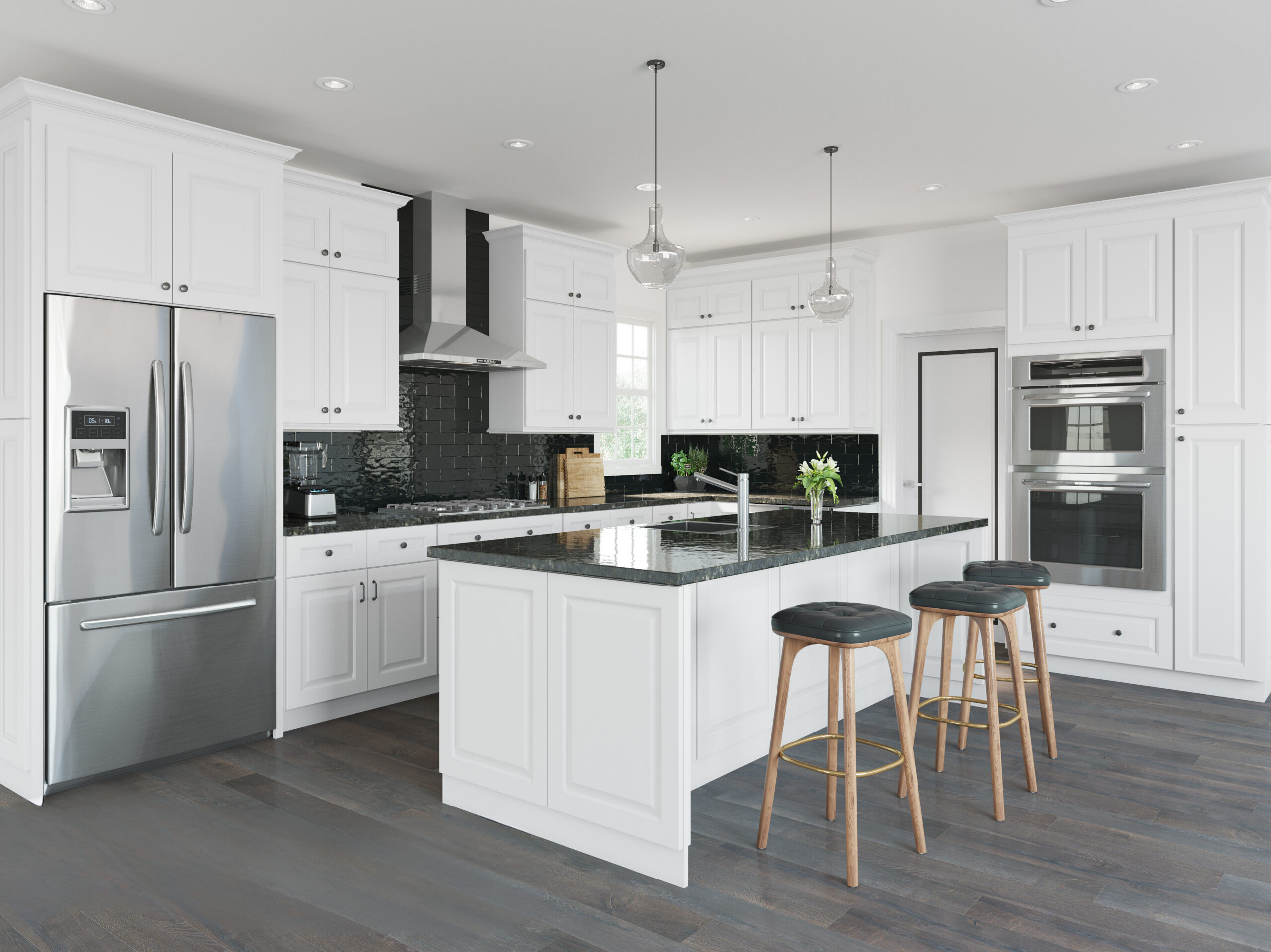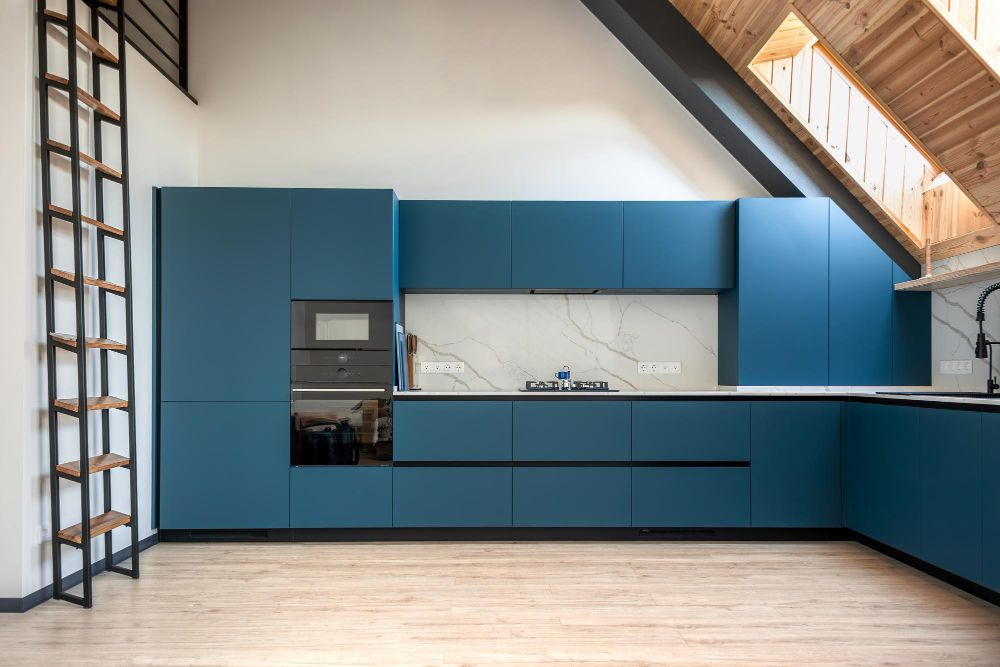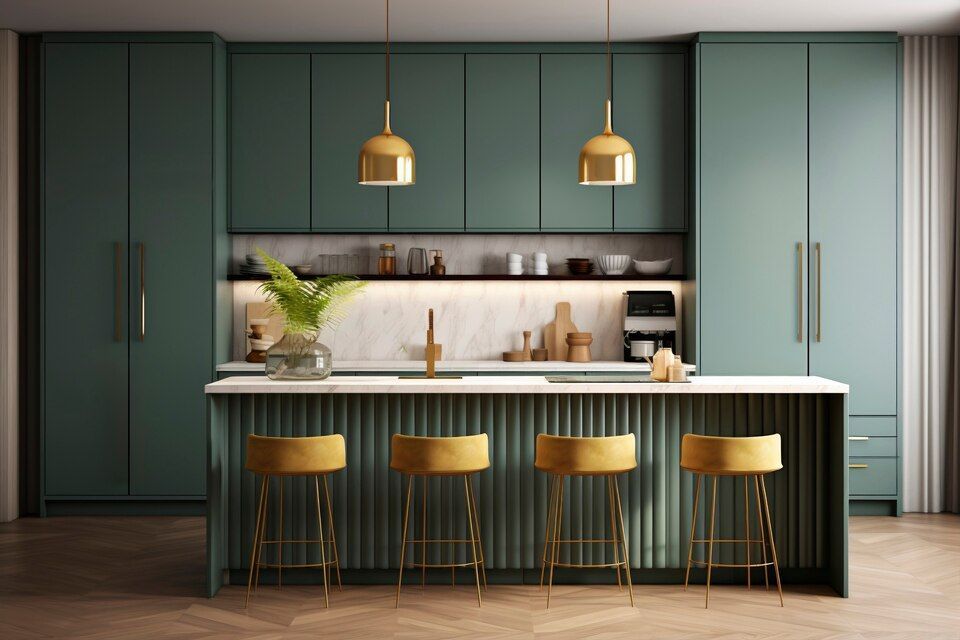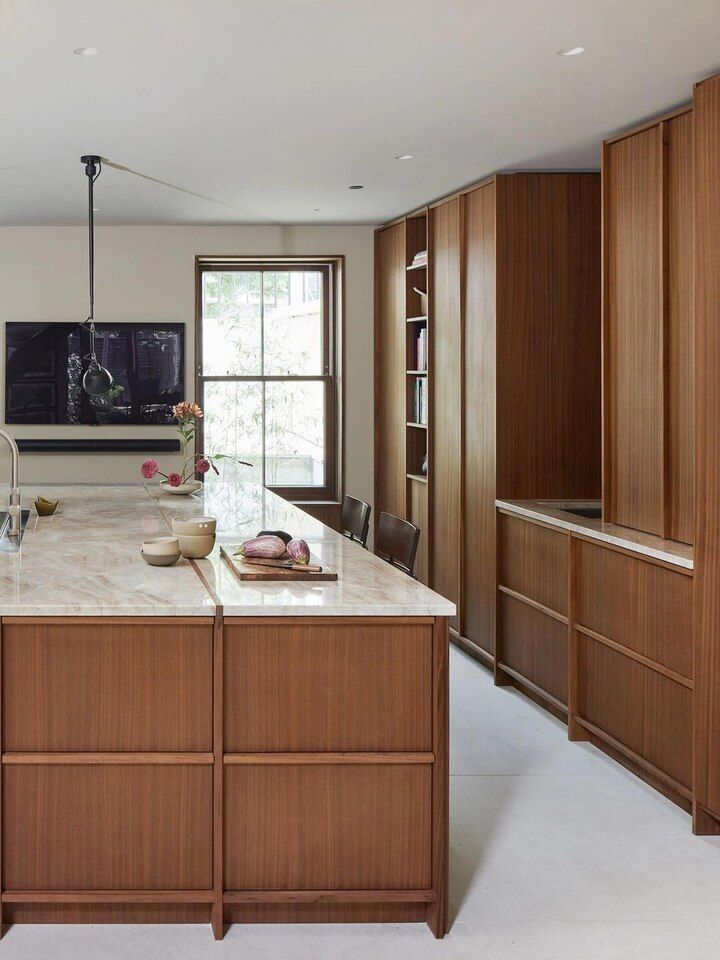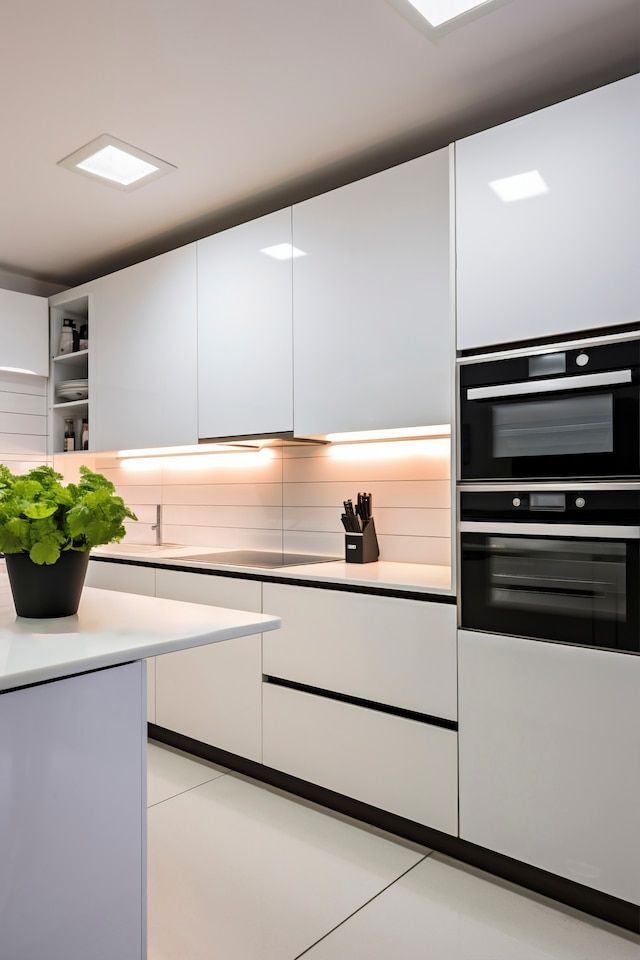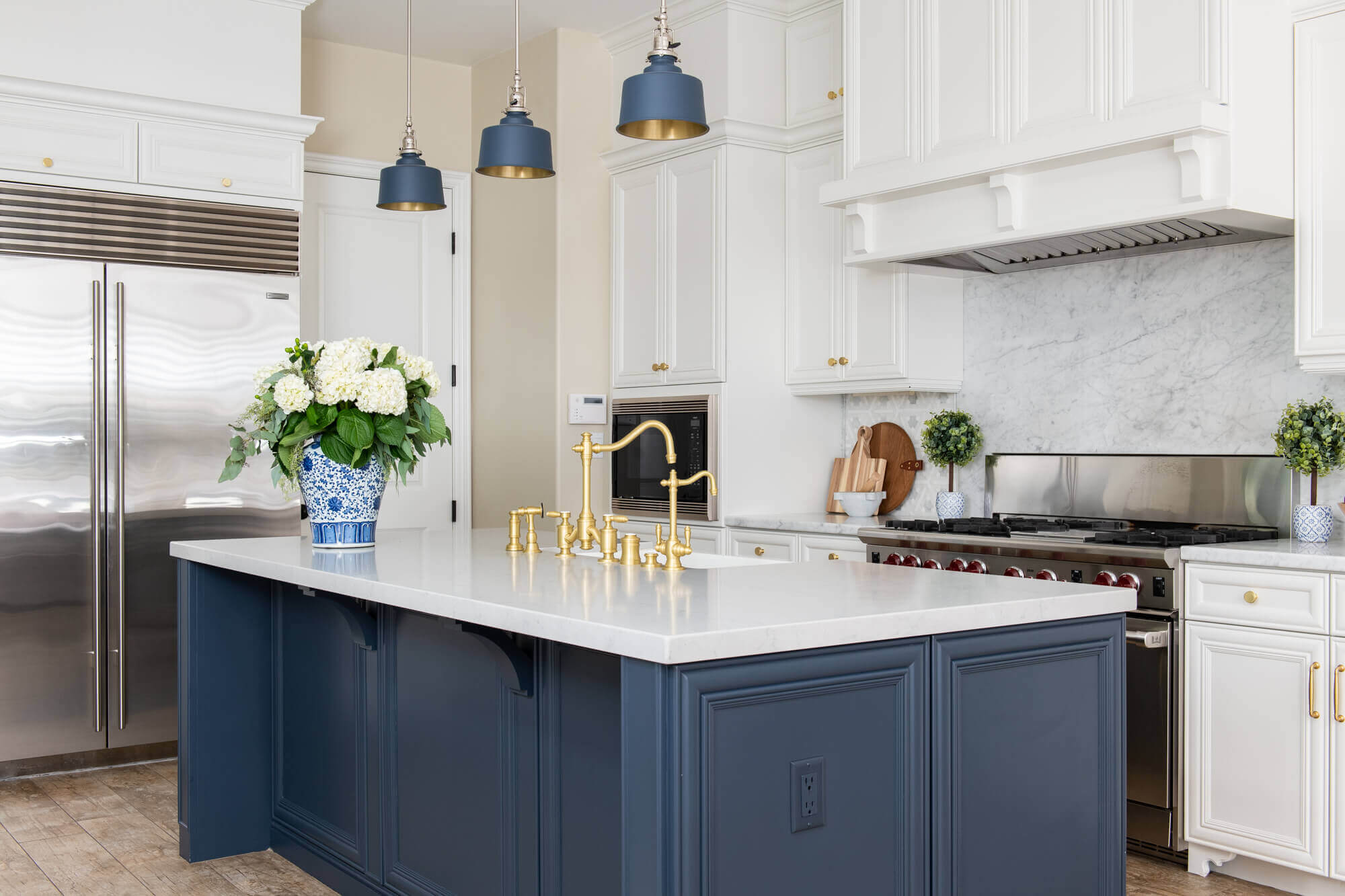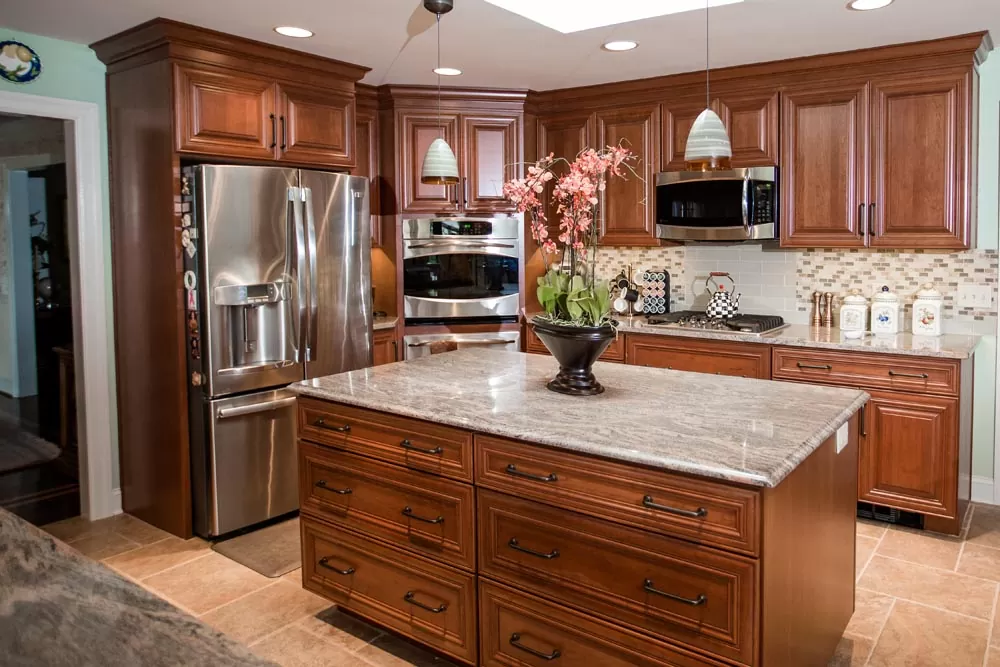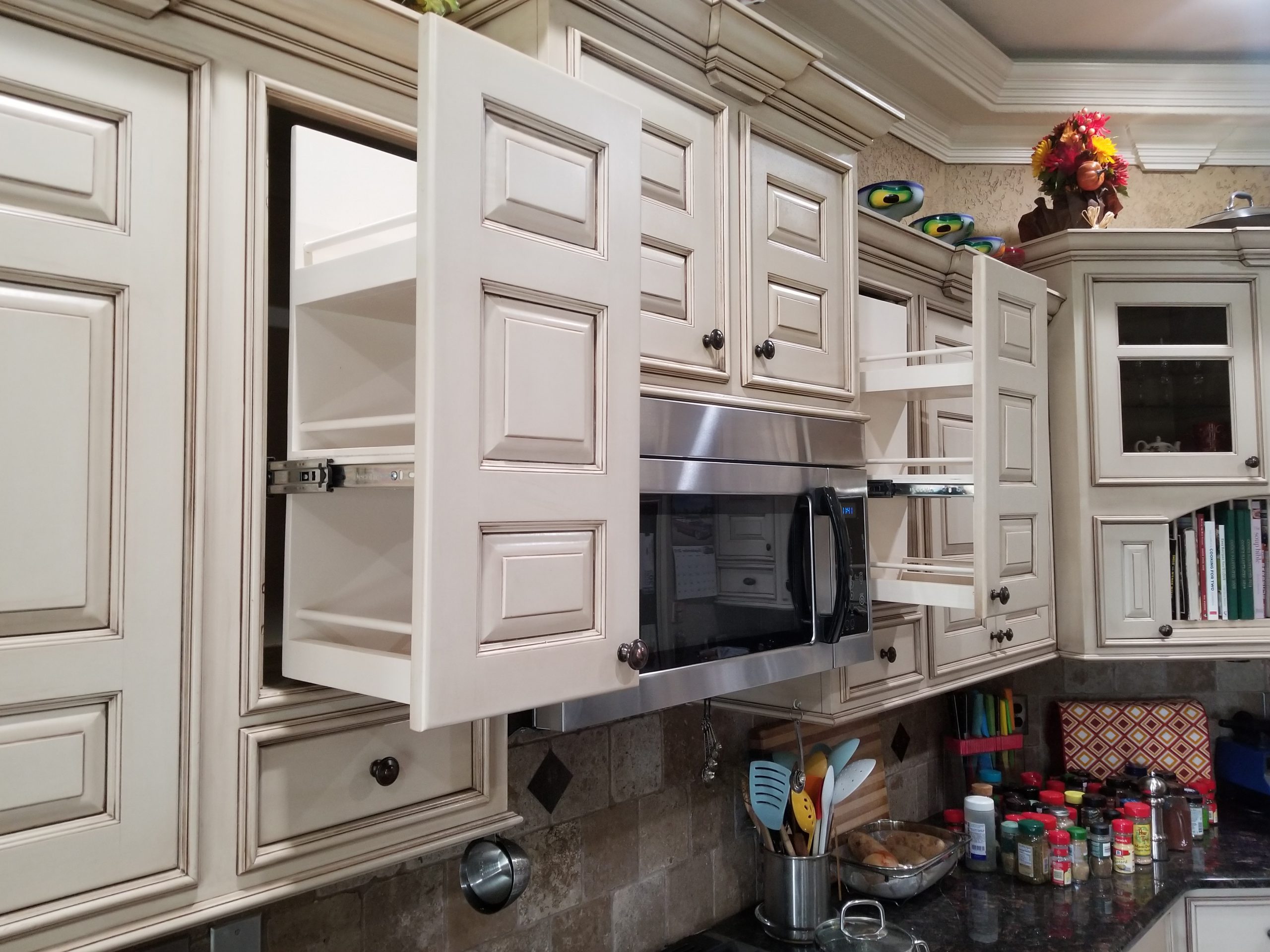What Materials Are Used for Custom Cabinetry?
When designing your dream kitchen or bathroom, custom cabinetry plays a pivotal role in both functionality and aesthetics. Selecting the right cabinet materials is crucial to ensure durability, optimal performance, and long-term satisfaction. At Direct Depot Kitchen Wholesalers, we help homeowners, contractors, and designers create beautiful, high-quality spaces by providing premium custom cabinets built with the best materials available.
In this guide, we’ll break down the most common materials used in custom cabinetry and explain how each impacts the look, cost, and longevity of your cabinets.
Solid Wood: The Classic Choice
Solid wood cabinetry is a popular choice for homeowners seeking a timeless, luxurious look. Each piece is milled directly from lumber, offering authentic character and natural beauty that cannot be perfectly replicated. Its inherent warmth adds a timeless appeal to any room, creating an inviting and high-end atmosphere.
Popular Wood Species Used:
- Maple: Durable, smooth-grain wood ideal for painting or staining. It offers a clean and uniform look.
- Cherry: Known for its rich color and fine grain that darkens with age.
- Oak: Extremely strong, with a distinct grain pattern.
- Walnut: Elegant and rich, often used in high-end kitchens. It provides a luxurious, dark, and sophisticated feel.
- Birch: A cost-effective hardwood with a light, smooth appearance.
The durability of solid wood is one of its greatest assets. It can withstand years of use and can be sanded down and refinished to repair damage or update its look. This quality makes it a long-term investment for your home, one that can evolve with your style.
However, solid wood does have some considerations. It is typically the most expensive material option. It can also expand and contract with changes in humidity, which may cause slight warping or cracking over time if not properly constructed and finished by a skilled craftsman.
Plywood: A Versatile and Strong Option
Plywood is a strong, engineered wood product made by pressing layers of wood veneer together with adhesive. It’s a go-to choice for cabinet boxes and structural components.
Many cabinet makers prefer high-grade plywood for cabinet boxes, the main structure of the cabinet.
- Excellent strength-to-weight ratio
- Resists warping and moisture better than solid wood
- Holds screws and fasteners securely
Despite its durability, plywood’s visible edges do need to be covered with veneer or edge banding. In addition, the quality varies by grade and manufacturer. If you are interested in plywood, contact Direct Depot Kitchen Wholesalers at (973) 256-3420. We work with high-quality plywood.
Medium-Density Fiberboard (MDF): Smooth and Stable
Medium-density fiberboard, or MDF, is an engineered wood product made from wood fibers, wax, and resin, compressed under high pressure. It’s commonly used for cabinet doors and panels, especially when painted finishes are desired.
The primary advantage of MDF is its incredibly smooth and uniform surface. It has no wood grain, making it a perfect substrate for paint. Painted MDF doors and panels have a flawless, even finish that is difficult to achieve with solid wood, which can show grain texture through the paint. You can choose blues, blacks, greens, or even whites to paint these cabinet doors.
MDF is also very stable and will not expand or contract with humidity changes like solid wood does. Its density makes it a solid and sturdy material, but also quite heavy. The main drawback is its susceptibility to water damage; if the surface seal is broken, moisture can cause it to swell and degrade. Moisture-resistant (MR) MDF is available for use in humid areas.
Particleboard: The Budget-Friendly Material
A lower-cost alternative, particlewood is made from wood particles and adhesive pressed into sheets. It’s sometimes used in budget-friendly cabinetry (stock or ready-to-assemble cabinetry) but has limitations.
The main benefit of particleboard is its low cost. It is also lightweight compared to MDF. However, it has low structural strength and does not hold screws as well as plywood or MDF. It is also highly vulnerable to moisture, which can cause it to swell and fall apart quickly.
For custom projects, particleboard is sometimes used for cabinet components that are not structural. When covered with a durable laminate or melamine finish, its performance can be improved, making it a viable option for certain applications.
Melamine and Laminate: The Durable Surfaces
These synthetic finishes are applied to MDF or particleboard cores. Melanin is commonly used for interior cabinet surfaces, while high-pressure laminate (HPL) is often used on door fronts for modern looks. These finishes are created by saturating layers of paper with resin and pressing them together under heat.
These surfaces offer a huge variety of design options. They come in solid colors, patterns, and realistic wood grain textures. They provide a very consistent appearance from one cabinet door to the next, which is ideal for modern and minimalist styles.
The primary benefits of melamine and laminate are their durability and ease of maintenance. The surfaces are hard, scratch-resistant, and very easy to clean. This makes them a practical choice for high-traffic areas. Quality edge banding is necessary to seal the substrate from moisture.
Hardware and Finishes: The Final Touches
The materials for custom cabinetry extend beyond the wood and panels. The hardware selected plays a big part in the function and style of the cabinets. This includes hinges, drawer slides, handles, and knobs. High-quality hardware, such as soft-close hinges and full-extension drawer slides, ensures smooth operation and a long lifespan.
Finishes are also a critical material choice. Stains are applied to solid wood or wood veneer to enhance the natural grain and add color. Paints provide a solid, opaque color and are often used on MDF or maple. Clear coats like lacquer or conversion varnish protect the surface from moisture and wear, with conversion varnish offering superior durability.
When choosing the best material, count on Direct Depot Kitchen Wholesaler’s free design services. Our design experts can help you find the perfect balance of beauty, durability, and cost for your custom cabinetry project.
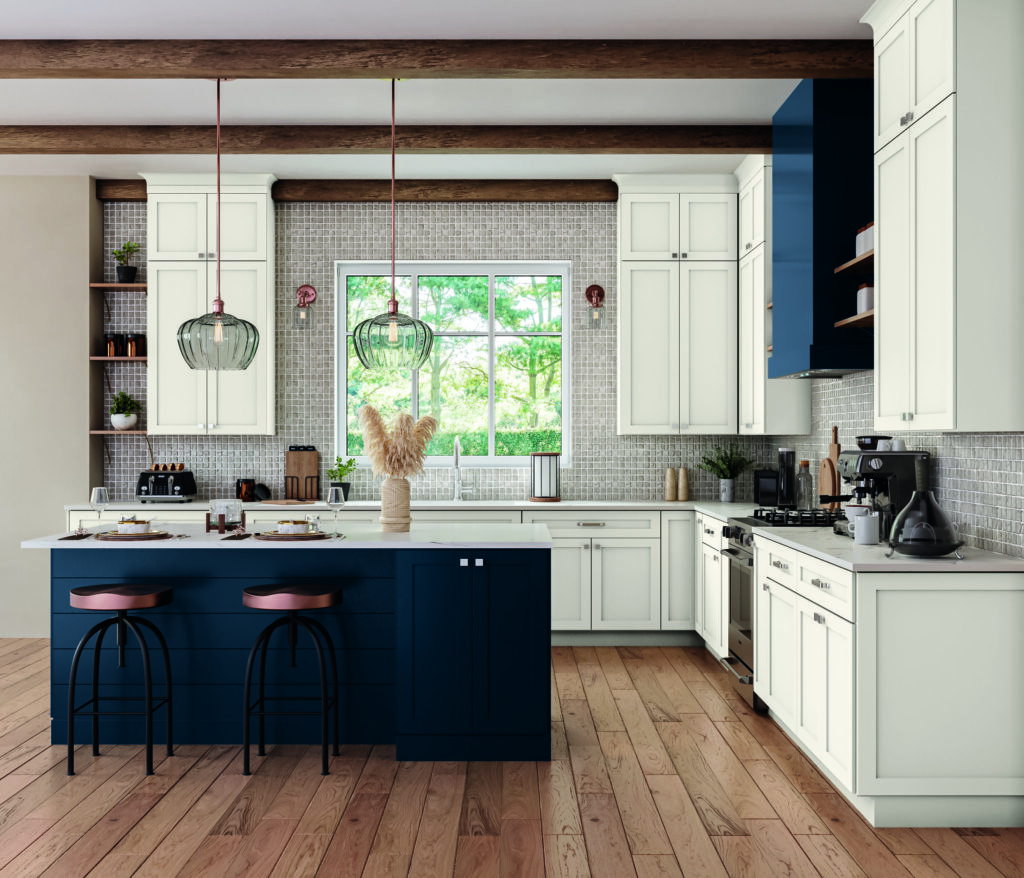
What Materials Are Used for Custom Cabinetry?
The world of custom cabinetry offers a wide array of material choices. From the timeless beauty of solid wood to the versatile strength of plywood and the smooth finish of MDF, each option has its own set of benefits. Other materials, like particleboard and laminate, provide solutions for different budgets and styles.
Ultimately, the best materials for your project depend on your taste, your budget, and how you plan to use your space. A thoughtful selection, guided by a professional’s expertise, will result in beautiful, functional cabinets that you can enjoy for many years.
Ready to start your custom cabinetry project? Come visit Direct Depot Kitchen Wholesalers’ design showroom to explore our extensive collection of custom cabinet materials. We are located at 24 Newark Pompton Turnpike (Rt. 23), Little Falls, NJ 07424.
